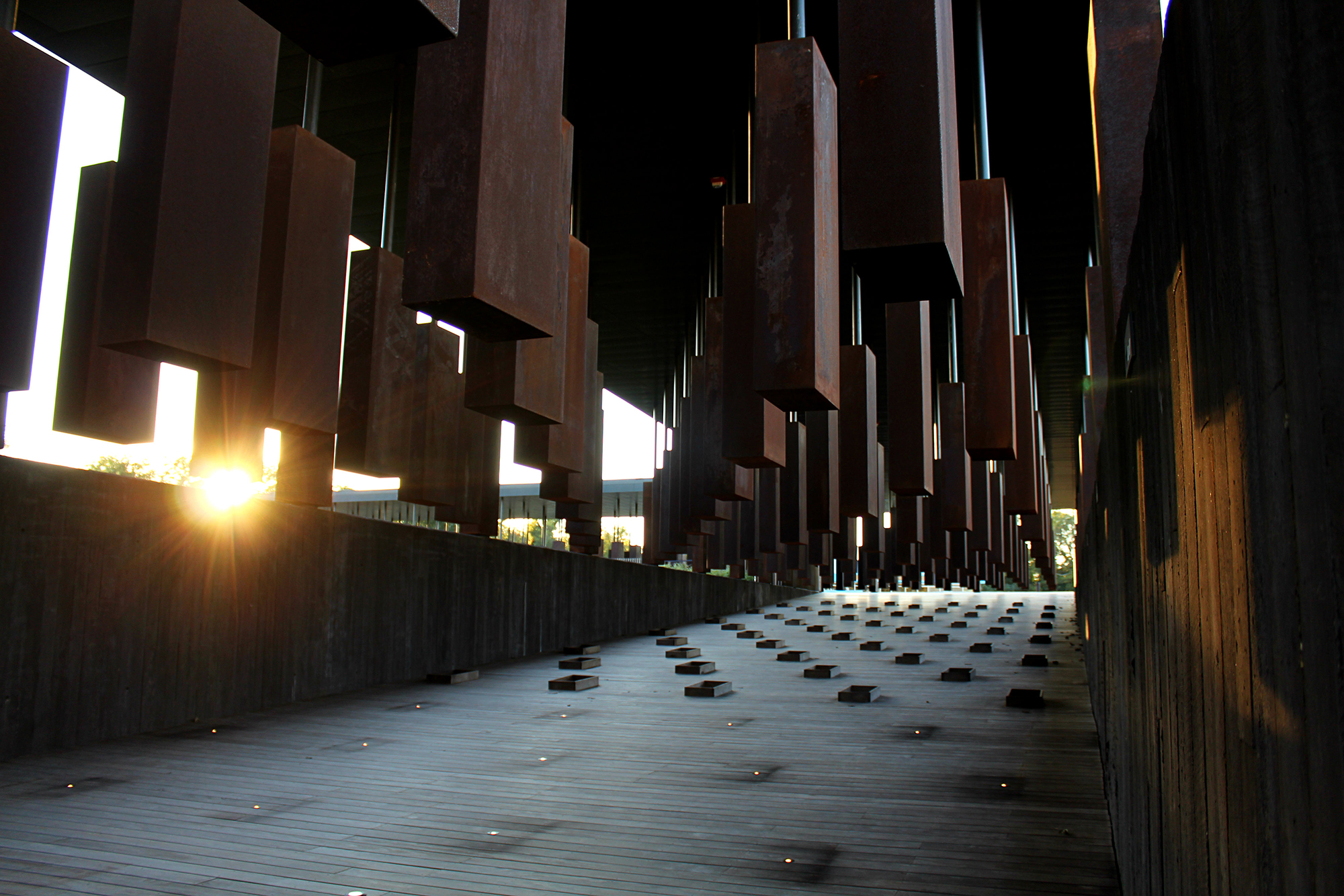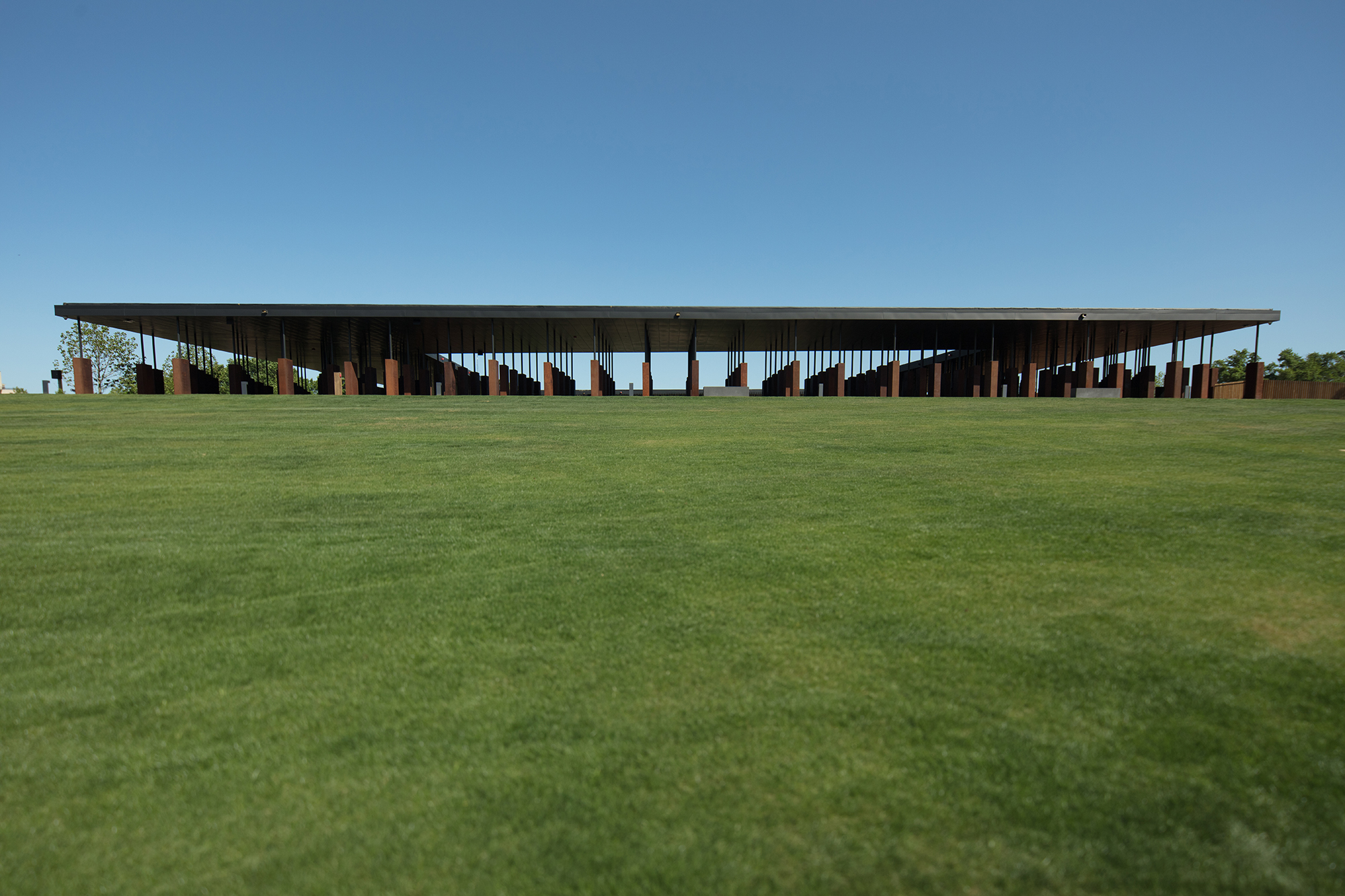National Memorial for Peace and Justice, The, commemorates victims of racial terrorism and other forms of racial injustice in the United States. The 6-acre (2.4-hectare) outdoor memorial occupies a hill overlooking downtown Montgomery, Alabama. It was created by the Equal Justice Initiative (EJI), a nonprofit legal rights organization.

The central feature of the memorial is a square, open-air structure with a grassy courtyard in the center. The structure houses more than 800 rectangular steel monuments, each engraved with the name of a U.S. state and county where lynching occurred. Lynching is the killing, often by hanging, of a person by a mob outside the law. Each 6-foot- (2-meter-) tall monument also displays the names of people lynched in a particular county and the dates of their deaths. In some cases, victims are listed as “Unknown.” Some of the monuments stand on the ground, and others are suspended from the ceiling. As visitors progress around the structure, the floor slopes downward. The visual effect is that at first, the monuments appear at eye level. Gradually, they rise overhead, suggesting suspended bodies.

Along one corridor hang dozens of summaries of why these lynchings occurred. For example, one man was lynched for walking behind the wife of his white employer, another for addressing a white police officer without the title mister. According to research by the EJI, more than 4,400 African Americans died in racial terror lynchings from 1877 to 1950. These lynchings were not responses to crimes, but rather a means of suppressing (keeping down) African Americans. Some victims were accused of overstepping social boundaries based on race. Others were accused of crimes and killed without a trial.
On the grounds of the memorial lie replicas of the monuments. The counties where lynchings occurred are invited to collect their replicas and install them as memorials in their own communities. In this way, each county may confront and acknowledge certain aspects of its history.
The National Memorial for Peace and Justice also features several large sculptures. One sculpture shows a group of enslaved Africans bound by rusty chains. Another honors the women who carried out the Montgomery bus boycott of 1955-1956. For about a year, many people refused to ride Montgomery’s racially segregated (separated) buses to protest racial discrimination. A third sculpture addresses police violence and discrimination in the criminal justice system. It shows a row of people holding up their hands.
The EJI created the National Memorial for Peace and Justice to help “advance truth and reconciliation around race in America.” The memorial is closely associated with the nearby Legacy Museum: From Enslavement to Mass Incarceration. Both sites opened to the public on April 26, 2018.
